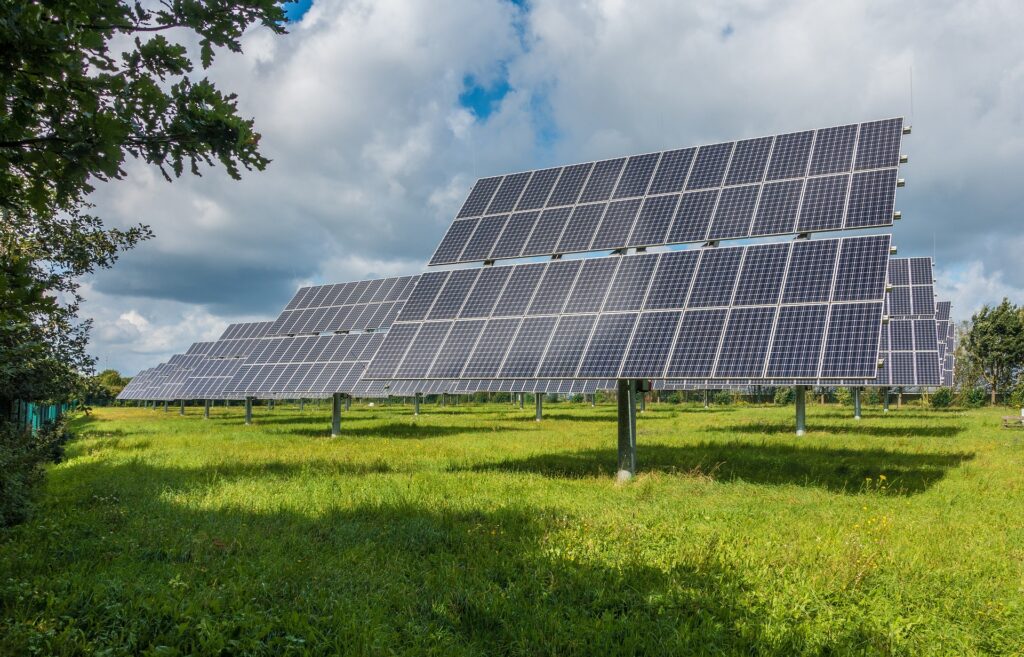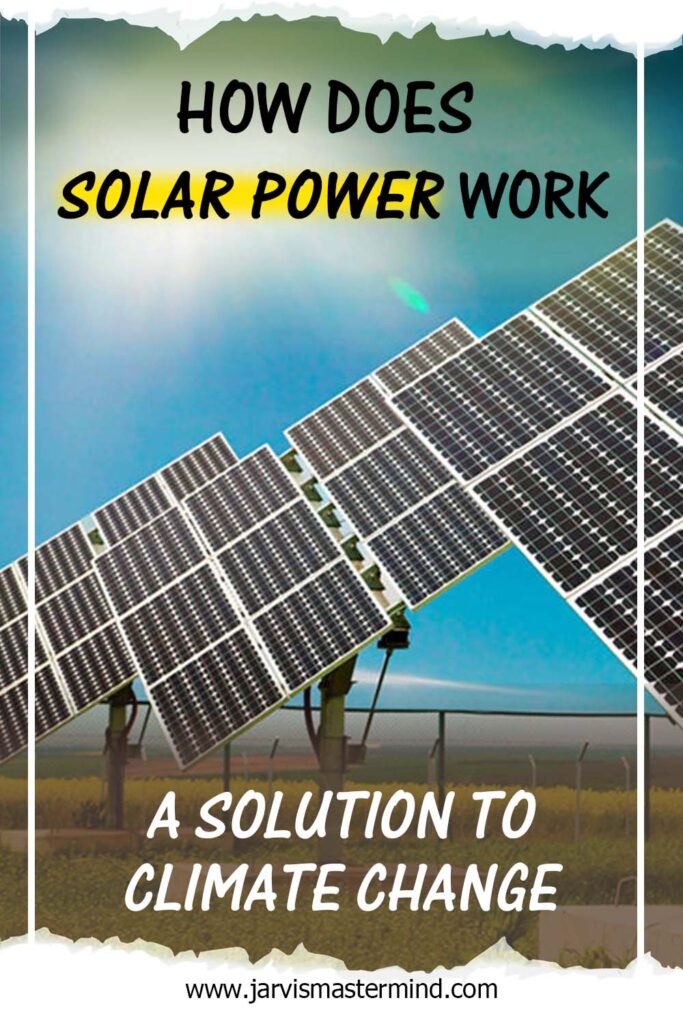You may be wondering: how does solar power work in conjunction with the increasing prevalence of installation of solar panels on the roofs of homes, businesses, and vehicles? Due to the benefits and advantages, this technology brings to both nature and humans.
how does solar energy work step by step
Electricity is generated through solar photovoltaic cells after absorbing light. According to the following steps:
- First, the panels activate after exposure to sunlight.
- Second, the cells give off an electric current, whereby a voltage is generated when the light comes on the junction between a metal and a semiconductor such as silicon or the junction between two semiconductors.
- Third, converting the energy generated from direct current to alternating current.
- Fourth, electricity supplies power to devices.
- Fifth, the energy meter measures the amount of electricity used.

how does solar energy work simple explanation
Photovoltaic cells absorb energy from light after being exposed to the sun. Which generates electric charges that move according to an electric field within the cell, and then an electric current flows.
You may have asked: Can a house run on solar power alone? The answer is: yes, and we will see that in the next paragraphs.
The component of solar power system
When you want to install a Solar power system it is necessary to know: how solar power work and what are its component, the function each, and thus to be able to plan well for the system.
The solar power system consists of two types of components: main and optional.
Main ingredients
The basic components of every solar system are solar panels, inverters or transformers, circuit breakers, brackets, or racks.
Solar Panels
Photovoltaic panels, or what is known as photovoltaic panels, are the most common components, the system consists of several panels, it is called a solar array.
- It can be installed on the roofs of buildings and vehicles or on the ground, tilting the roof at a certain angle in order to achieve maximum absorption of sunlight during the day.
- Solar panels vary depending on the material they are manufactured e.g. crystalline silicon wafer panels.
System breaker
It is an electrical switch to control the output of the system, from the disconnection and connection of the system.
Inverter
It is used to convert the direct current (DC) electricity generated by the panels into alternating current (AC) electricity so that the devices can be powered.
Shelves and holders
It is used when installing solar panels on roofs or the ground. The mounts vary according to the places where they are installed. They must be installed more correctly, taking into account the angle, so that the efficiency of the system is not affected.
Additional components
The additional components are represented by four components: batteries, solar meters, charger controllers, and storage units for solar batteries.
Energy meter
Or what is known as a power system meter used to measure how much solar energy the panels produce. It helps you monitor system performance and detect errors if they occur with the possibility of fixing them.
Some may ask: Do solar panels work at night? The answer
Batteries
It is used to store energy to be used later at night, for example, to store large quantities, several batteries must be used, called the term battery bank.
There are several types of batteries according to their components, as they mainly consist of two main components, lead acid, and lithium. Each has its own pros, cons, and price:
- Lead acid batteries such as flooded lead acid batteries or AGM batteries.
- Lithium-ion batteries.
- Nickel-cadmium batteries.
- Flow batteries.
Charge controllers
A device that controls the flow of electricity from the panels to the battery at a certain limit to preserve battery life.
The device does not need to be used in the absence of a battery, and it has two main types:
- MPPT Maximum Power Point Tracking (MPPT).
- Pulse Width Modulation (PWM).
What is solar energy used for?
After you know: how does solar power work? You may be wondering what other uses for solar energy apart from electricity generation. It uses in various applications as:
Hydrogen production
Through silicon-based devices that use solar energy, the water is divided into the elements hydrogen and oxygen, without revealing pollutants.
Thermal energy
There are flat panel collectors that convert solar energy into thermal energy for use in solar heating applications.
Solar cooking stove
There are solar ovens that project sunlight from a wide area to a central point. A black pan is used to convert sunlight into heat.
Solar energy advantages and disadvantages
After we have explained: how solar power work and what are its components and uses, we will discuss the pros and cons of this system.
The advantages of solar energy
The advantages of solar energy systems are reflected in the following items:
Renewable energy source
Since the sunlight will not run out, it is also clean and addresses the problems of pollution, climate change, and carbon footprint.
Electricity Bills
Solar energy systems reduce energy bills as savings depend on usage.
Various applications
Solar energy can be used for several purposes, including electricity generation and heating.
Maintenance costs
Solar systems do not require much maintenance, but it is necessary to clean them twice a year.
The disadvantages of solar energy
Despite the advantages of solar energy systems, it is not without some disadvantages, which are manifested:
The initial cost
The installation cost includes the price of solar panels, inverter, wires, batteries, and installation fees.
Weather dependency
Some people may be asked: Do solar panels work in winter? Do solar panels work in rainy weather?
Where the greatest amount of energy is generated on sunny days, while it is less on cloudy days.
Storage cost
The energy must be stored in large batteries if it is not used immediately. This energy can be used during the night. This is a costly solution.
Space
As the production of large amounts of energy, it requires more numbers of solar panels and therefore more space.
Pollution
Greenhouse gases may be produced as a result of the panels, but the pollution is still lower than others.
But what are the 2 main disadvantages of solar energy? It is the initial cost and storage cost.
Finally, the answer to “how does solar power work?” boils down to converting sunlight into energy that can be used in many applications.

